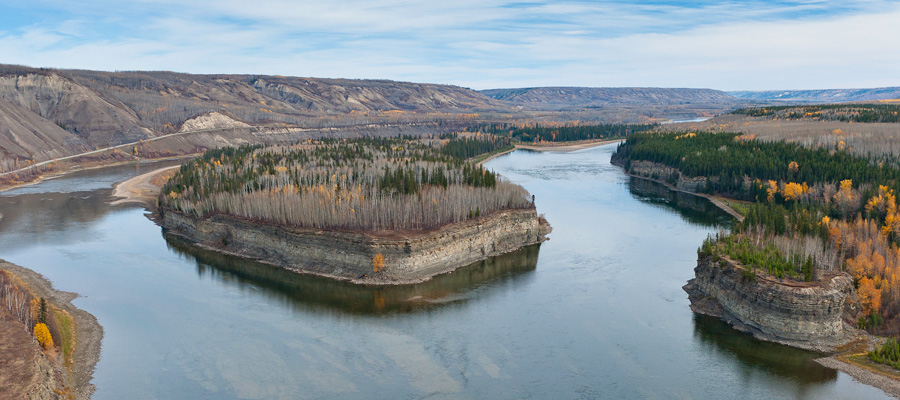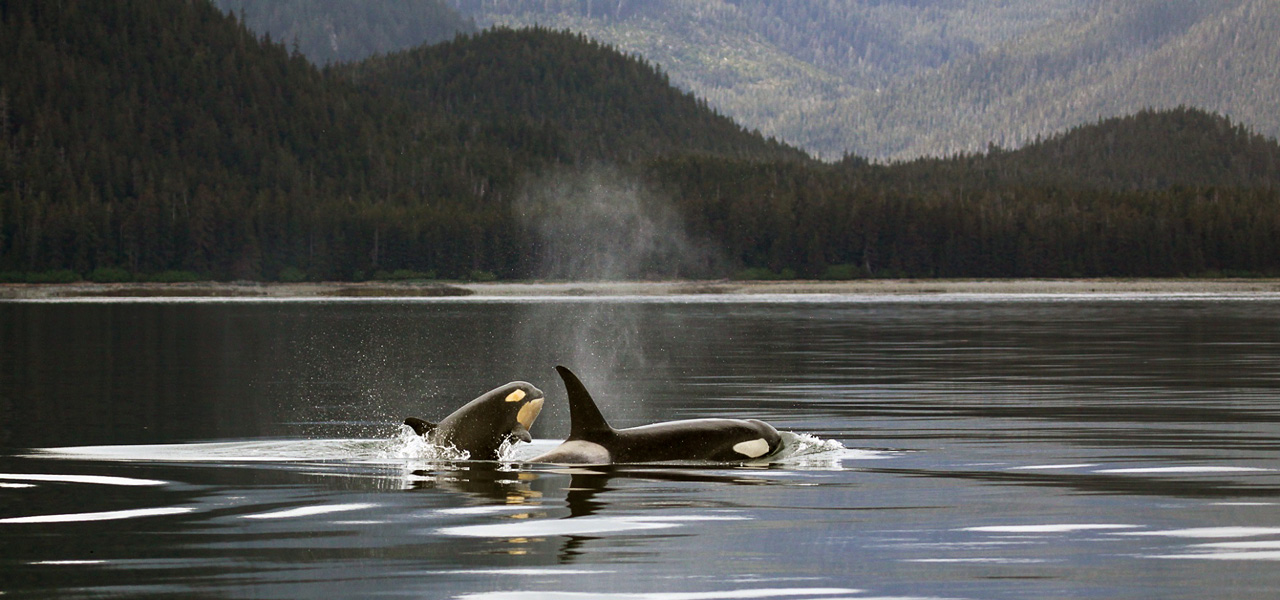Reconciliation in action?

Far from it, says chief of holdout First Nation over deal with province on Site C
In 2015, the Truth and Reconciliation Commission, which was tasked with informing all Canadians about what happened to Indigenous Peoples in residential schools, defined the word reconciliation as a process of “establishing and maintaining a mutually respectful relationship between Aboriginal and non-Aboriginal peoples in this country.”
The Commission went on to say that in order for true reconciliation to happen “there has to be awareness of the past, an acknowledgement of the harm that has been inflicted, atonement for the causes and action to change behaviour.”
By that definition, the recent announcement by the BC government, BC Hydro, the federal government and the West Moberly First Nations that an agreement had been reached to end the First Nations’ efforts before the courts to halt the controversial Site C hydroelectric project, strikes a decidedly discordant note.
Both provincial cabinet ministers featured in the government news release announcing the deal spoke about what had unfolded as reconciliation in action.
“I want to acknowledge the good faith, commitment and hard work of West Moberly First Nations in coming together with BC Hydro, the Government of Canada and the Province in the spirit of reconciliation to negotiate these important agreements,” said Energy Minister Bruce Ralston.
“Today’s agreements with West Moberly First Nations are an example of our shared commitment to pursue negotiations over litigation as the primary forum for achieving reconciliation and renewed Crown-Indigenous relationships,” echoed Indigenous Affairs Minister Murray Rankin.
Such assertions, however, are undermined by the actions of the current provincial government and the governments before it.
Ever since April 2010, when then premier Gordon Campbell jetted up to Hudson’s Hope to unveil his government’s plans to build a third major hydroelectric dam on the Peace River, the Province has done all it can to paint First Nation opponents of the culturally and ecologically ruinous project into a corner.
The point of no return
From that day on, but in particular after Campbell’s successor Christy Clark vowed infamously to push the project “past the point of no return,” one side—and only one side—has been the aggressor in the so-called “reconciliation” process. Ever since April 2010, the Province has done all it can to paint First Nation opponents of the culturally and ecologically ruinous project into a corner.
- Sinking the first shovels into the ground at the construction Site in 2015, knowing full well that West Moberly objected to the project because of its impacts on its treaty-protected rights.
- Doling out undisclosed tens if not hundreds of millions of dollars in lucrative Site C construction-related contracts to other First Nations, many of whose home communities were far more distant from the dam site than West Moberly, thus pitting First Nation against First Nation in a transparent attempt to divide and conquer.
- Committing to spending more and more money on the project despite mounting evidence of sobering geotechnical challenges at the site that have pushed Site C’s costs from its originally estimated $6 billion under Premier Campbell’s tenure to the $16 billion and counting under Premier John Horgan.
- And aggressively fighting West Moberly and other First Nations when they turned to the courts arguing that the extensive industrialization of their lands, as embodied in projects like Site C, violated their rights to continue to hunt, fish, trap and gather foods as enshrined in Treaty 8.
All of this and more put a crushing weight on the shoulders of Chief Roland Willson, who has been elected over and over again to lead the West Moberly First Nations.
A heavy heart
Willson was the first to speak in the news release where Ralston and Rankin made their reconciliation claims. And he had this to say:
“The Site C project has had major impacts on our community, and the flooding and operation of this dam will have effects that will be felt for generations to come. The decision to settle this part of the court case was taken with a heavy heart and with serious considerations of the best interests of our community. Our focus now turns towards efforts to heal what remains of our land, to heal our people, and to protect our way of life in the face of all the resource development in Treaty No. 8 territory.”
Contacted by phone after the announcement, Willson said that he did not accept the proposition that what had been announced came even remotely close to reconciliation.
“Reconciliation starts with avoiding deliberate, unnecessary impacts to First Nations communities, not ignoring them. As everyone knows, Site C is not needed. To say reconciliation is working would be not developing Site C and working with us to identify better options, not ignore everything we say,” Willson said.
The task of healing what remains of West Moberly’s once bountiful lands was already severely compromised by decades of industrial developments long before Site C’s construction even began. Those developments included the massive W.A.C. Bennett dam and the smaller Peace Canyon dam downriver of it; vast areas of forest that were stripped of their old-growth trees in industrial logging operations that ruined traplines and compromised fishing and hunting opportunities; and a spiderweb of natural gas developments including illegally built dams, huge pits filled with toxic wastewater, thousands of fracked gas wells, pipeline corridors and seismic lines that only deepened the destruction wrought by the logging industry. Willson said that he did not accept the proposition that what had been announced came even remotely close to reconciliation.
Now, to be added to the list, if and when the grotesquely over-budget Site C construction project is completed and actually withstands the pressure of all of the water it is supposed to impound, will be a reservoir that eats up 5,500 hectares of land along 120 kilometres of the Peace River and important tributaries like the Moberly and Halfway rivers.
No fish, at least none worth eating
In a stark reminder of what the future holds for West Moberly members, Willson traveled to Victoria in 2015 with 90 kilograms of frozen bull trout and other fish caught from the Crooked River as they returned from the massive Williston Reservoir created by the W.A.C. Bennett dam. When reservoirs flood lands covered in vegetation, the decaying plant life releases mercury. “Typically, you’d be proud of this fish,” Willson said then. “But we can’t eat this.”
That same fate awaits with the Site C reservoir, a water body that will not only yield contaminated fish but will prove a barrier to ungulates like caribou crossing from one side of the reservoir to the other.
West Moberly’s lands, like those of its other Treaty 8 neighbors, are now a giant industrial sacrifice zone, with the cumulative impacts of industrialization piling up so quickly that it is harder and harder, and in some cases impossible, for Nation members to hunt, fish and trap as they once did.
Cumulative impacts, particularly those relating to hydroelectric dams, had promised to be a central feature in a civil claim filed by the First Nation in 2018 and which the BC Supreme Court ruled must be dealt with before BC Hydro was permitted to fill the Site C reservoir. The reconciliation agreement has now taken that case off the books.
There’s very good reason to believe that the Province was extremely anxious not to see that trial proceed to court.
While it was awaiting trial, another case brought by a First Nation ended before the BC Supreme Court and eventually resulted in a precedent-setting ruling that found that the provincial government had failed to take into account how cumulative impacts had infringed on the treaty rights of Blueberry River First Nations’ members. West Moberly’s lands, like those of its other Treaty 8 neighbors, are now a giant industrial sacrifice zone.
And it was provincial government ministries and entities like the Oil and Gas Commission that were responsible for those infringements because they had approved project after project as if somehow those projects existed in complete isolation of one another.
Ships passing in the night
The ruling included references to many embarrassing things to come out in the trial including:
- Assertions by the provincial government that wildfires somehow constituted more of a threat to treaty rights than did the proliferation of natural gas wells and industry infrastructure, a finding that is at odds with the fact that many First Nations over generations used fire as a tool to promote beneficial changes on the landscape that improved conditions for certain wildlife species.
- Assertions by the provincial government that scientific studies it had paid for and directed and that concluded that industrial developments were harming caribou populations were not, in fact, reflective of the government’s views.
- Evidence that individual government agencies were operating in “silos” and not dealing effectively with cumulative impacts. They were, the court noted, like proverbial “ships passing in the night.”
“One agency is of the view that the other will consider treaty rights and the other is of the view that treaty rights have already been considered, or that they need not be as the area is designated for development,” Justice Burke wrote. It was provincial government ministries and entities like the Oil and Gas Commission approved project after project as if somehow those projects existed in complete isolation of one another.
Under the agreement, which Willson reiterates was not what he and others had hoped for years ago when they first opposed the project, BC Hydro and the Province will provide undisclosed financial benefits, contracting opportunities and a transfer of provincial Crown lands to the Nation as well as working with the Nation to jointly develop “land management measures” over provincial Crown lands in its traditional territory.
In exchange, the Nation has agreed to end its claims against the Site C project.
The deal remains only a “partial” settlement of West Moberly’s civil claims, Willson said, with the full outcome still to be worked out with BC Hydro and the provincial and federal governments.
And hopefully, when that day comes, the settlement will be so large that maybe, just maybe, it prompts future provincial governments to reconcile with First Nations before megaprojects like the Site C dam are approved, not after the fact.
A version of this article was originally published by The Tyee.
Topics: Environment, resources & sustainability, First Nations & Indigenous



